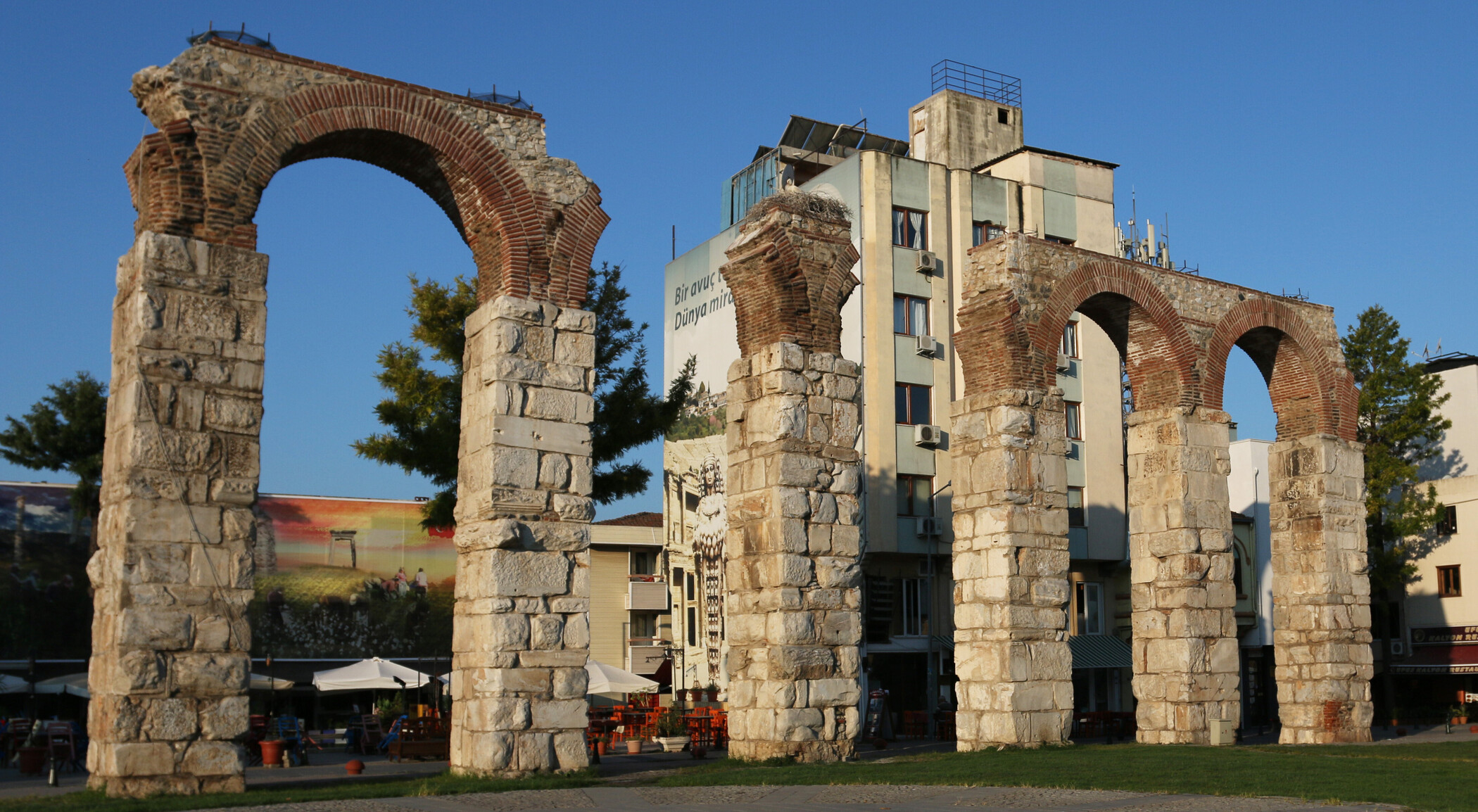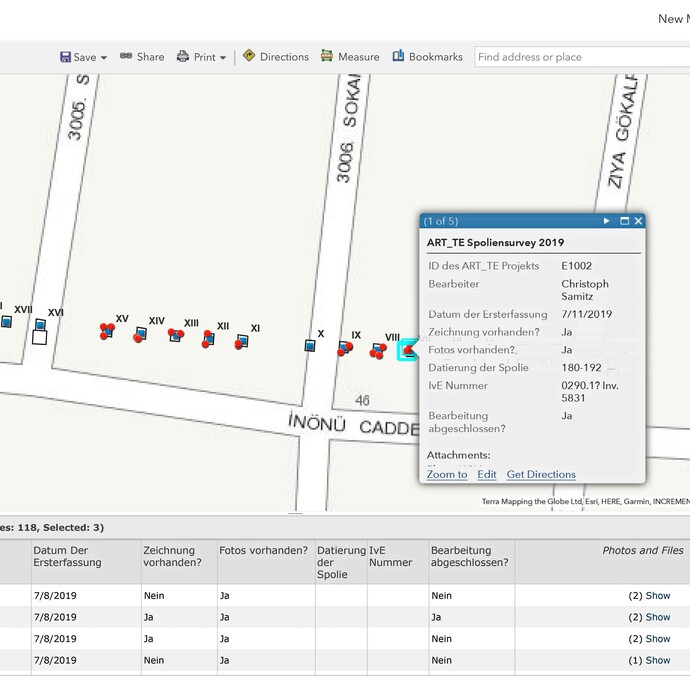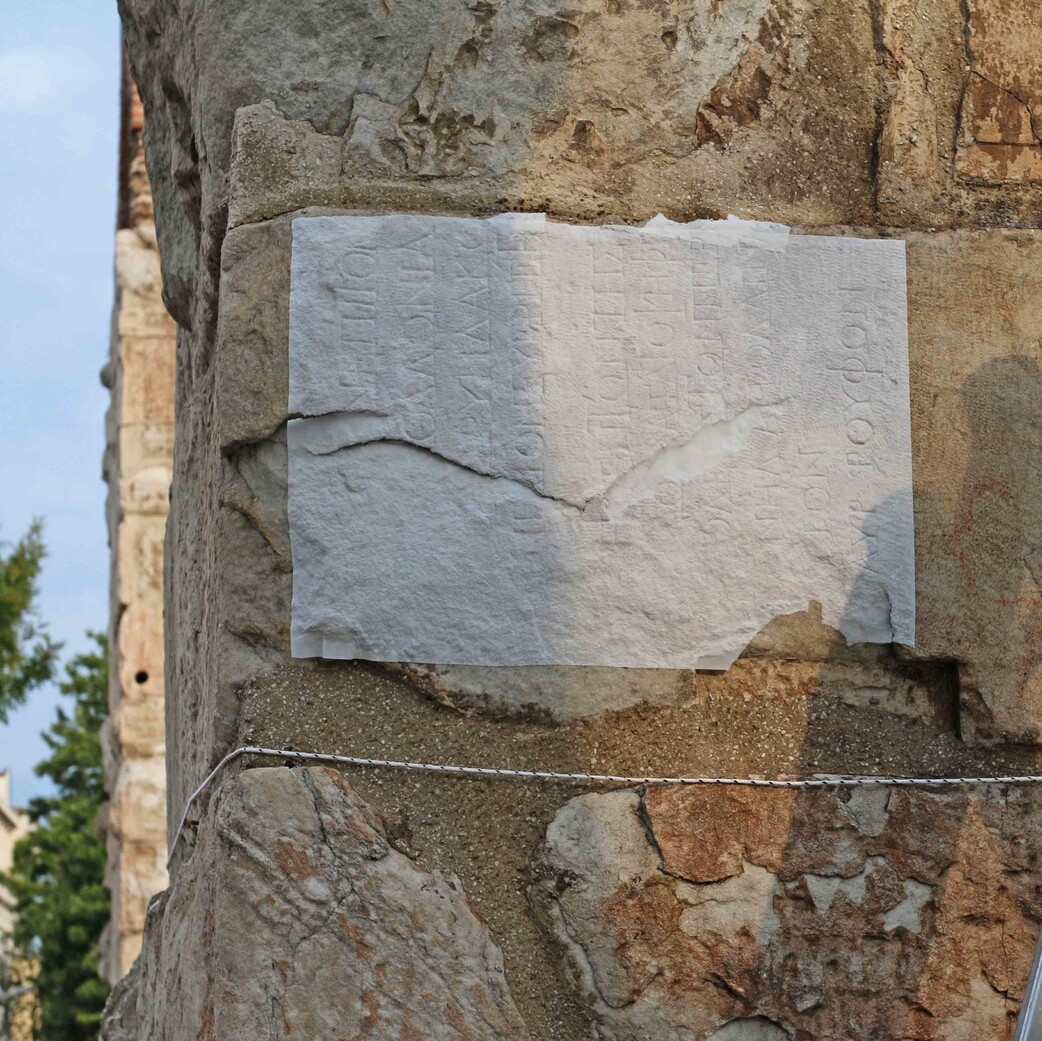
Architectural Documentation
The working hypothesis implied that the marble piers of this aqueduct were constructed with recycled marble blocks from the nearby Artemision, since after the pagan sanctuary was abandoned the precious marble blocks were on a large scale dismantled and reused for building the St. Johns Basilica and associated buildings like the aqueduct. Large quantities of inscriptions, originally set up within the Artemision revealed by their content, were equally secondary used as building material at that time.
The 57 examined pillars of the Selçuk Aqueduct are constructed entirely of marble spolias below their brick arches. All inscriptions as well as all architectural blocks which could be assigned by comparison to a certain building were mapped and documented. Thirteen architectural blocks belonging to the later temple were identified which supports the initial hypothesis without doubt.
A surprising discovery was furthermore to recognize 21 blocks in total belonging to the Doric Building or Doric halls around the temple which were documented at the British Museum in May 2019.
Epigraphic
The epigraphical analysis supports these results. Vera Hofmann examined 42 of the known 69 inscription reused within the pillars for the aquaeduct in Selçuk. The overwhelming majority consists of bases for statues with inscriptions of roman imperial time for emperors, their family members and highest officials. In one case the installation within the temenos is proved through a matching fragment in the British Museum, found by J.T. Wood within the sanctuary.





